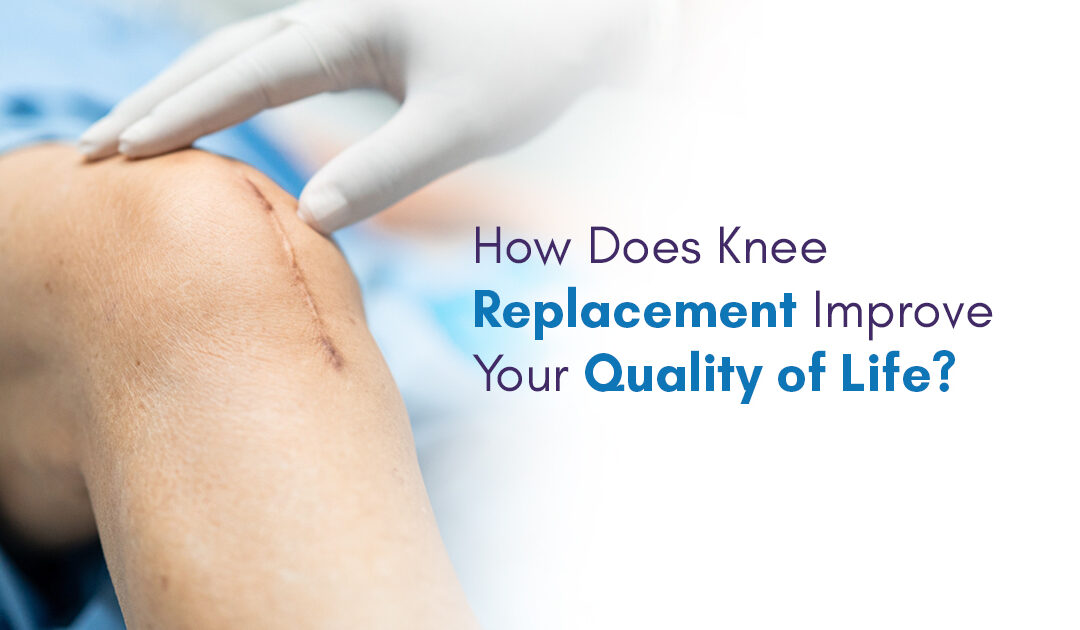One of the most successful orthopedic surgeries done in today’s time, the knee replacement surgery is performed to replace parts if the knee joints are worn out or injured. It is also known as knee arthroplasty and is proven to enhance the patient’s mobility and an overall improvement in the quality of life.
The surgery consists of replacing the damaged or injured bone and cartilage with parts of metal and plastic. Factors such as age, weight, activity levels, knee size and shape, and overall well-being dictate the suitable artificial joint and surgical techniques. To know if you need a knee replacement, you need to speak to a surgeon who will check your knee’s movement, stability, and strength. The surgeon may rely on X-rays as well to determine how much damage or injury has been caused.
Why is Knee Replacement Surgery Performed?
The major reason for getting knee replacement surgery is generally the pain resulting from arthritis. The pain is usually invoked in activities involving walking, climbing stairs, and getting up from chairs. There is also partial knee replacement for those that need only one damaged part of the knee replaced. In the event of the entire joint getting replaced, the ends of the thighbone and shinbone are reshaped. Additionally, the entire joint is resurfaced. This is referred to as total knee replacement. The hard tubes of the thighbone and shinbone have a soft center, and the ends of the artificial parts are added into the softer central area of the bones. The bands of tissue that assist in holding joints in place are called ligaments. In case the knee’s ligaments are weak and are unable to hold the joint by themselves, the surgeon may decide on an implant, which may be used to connect them to make sure they do not separate.
What are the Risks Associated with Knee Replacement Surgery?
Every surgery has some risks along with the benefits. The ones associated with knee replacement surgery include:
- Blood Clots: The most common site for blood clots is the legs. However, there is a huge possibility that they may travel to the lungs and turn deadly. To prevent this consequence, doctors suggest blood-thinning medicines to the patients.
- Damage in the Nerves: The area where the implant is present may be injured. Nerve damage can be held responsible for numbness, weakness, and pain.
- Infection: There are chances that an infection may be caused at the incision region or deeper tissue. At times, surgery is employed to treat an infection.
It is important to remember that while implants for knee replacement may be durable, they may also loosen and become worn over time. In case of this, another surgery may be performed to replace the loose or worn parts.
How to Prepare for Knee Replacement Surgery?
You may be advised to stop taking specific medicines and dietary supplements before your surgery. You may also be instructed to avoid eating anything post midnight the day of your surgery.
Post-surgery, it is important that you arrange crutches or a walker, as you may be recommended to use them. Ensure that you have some help with household or everyday tasks and have a ride from the hospital. You may choose the following options to make your recovery easy and safe:
- Create a one-level living area, as navigating stairs may be challenging.
- Put in place safety bars or a reliable handrail in your shower or bathtub.
- Make sure that the stairway handrails are safe and secure to use.
- Get a sturdy chair with a solid seat cushion and back support, accompanied by a footstool to raise your leg.
- Arrange to have a toilet seat riser with handles if your toilet is low.
- Acquire a stable bench or chair for your shower.
- Remove loose rugs and cords.
What is the Impact of Knee Replacement Surgery?
For several people, knee replacement surgery works wonders. They can move and experience a better quality of life without the pain. Most knee replacements may last up to a minimum of 15 to 20 years. Post-recovery, you may not only resume your routine activities but also engage in low-impact activities such as walking, jogging, swimming, or even biking. Try to avoid high-impact activities unless agreed upon by the doctor. It is essential to be patient with your recovery and take one step at a time to improve your overall fitness and wellbeing. Make sure to consult with your healthcare professional for ways to increase your activity after your knee replacement and for queries addressing your concerns.
